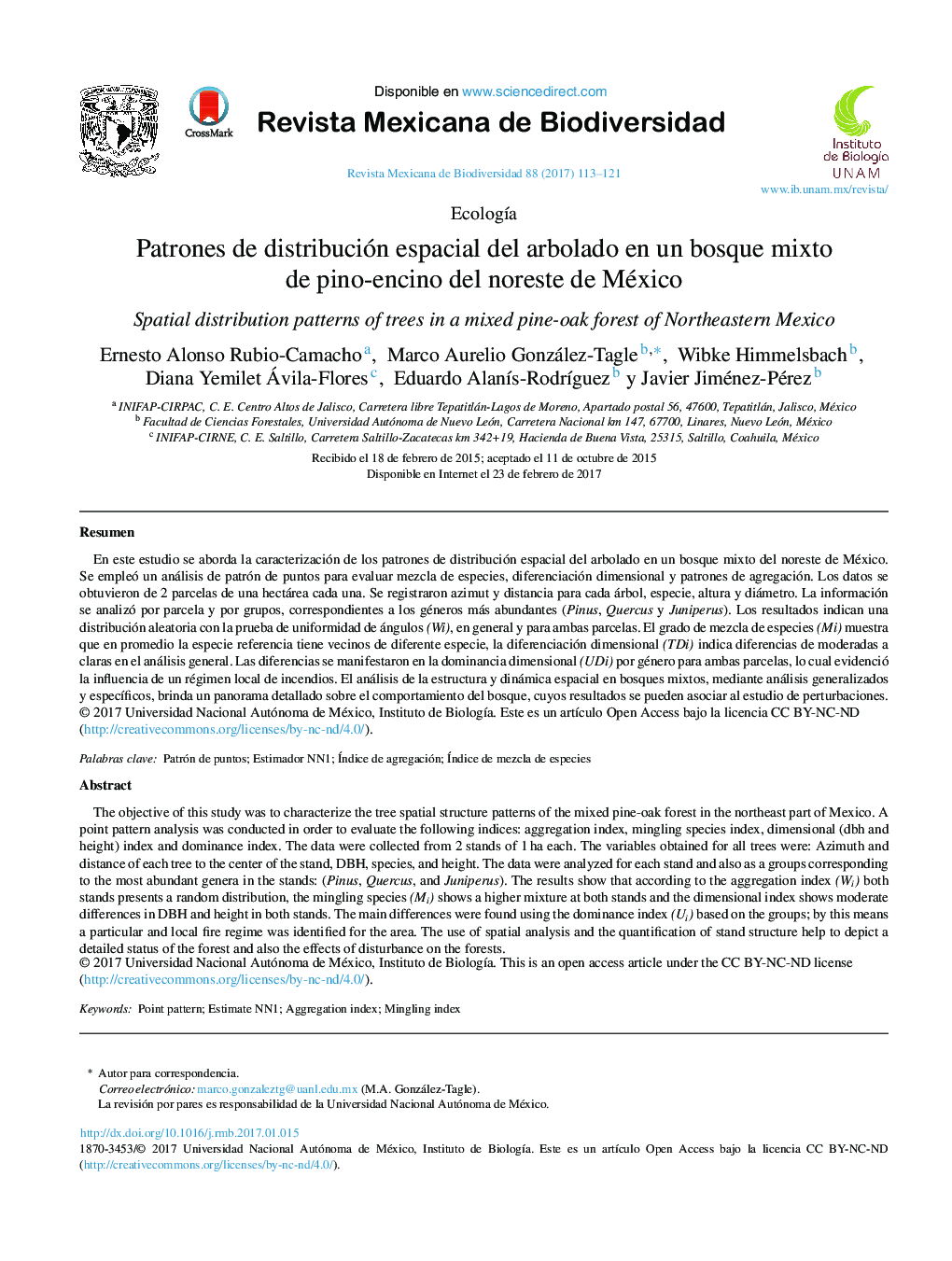| Article ID | Journal | Published Year | Pages | File Type |
|---|---|---|---|---|
| 8867087 | Revista Mexicana de Biodiversidad | 2017 | 9 Pages |
Abstract
The objective of this study was to characterize the tree spatial structure patterns of the mixed pine-oak forest in the northeast part of Mexico. A point pattern analysis was conducted in order to evaluate the following indices: aggregation index, mingling species index, dimensional (dbh and height) index and dominance index. The data were collected from 2 stands of 1Â ha each. The variables obtained for all trees were: Azimuth and distance of each tree to the center of the stand, DBH, species, and height. The data were analyzed for each stand and also as a groups corresponding to the most abundant genera in the stands: (Pinus, Quercus, and Juniperus). The results show that according to the aggregation index (Wi) both stands presents a random distribution, the mingling species (Mi) shows a higher mixture at both stands and the dimensional index shows moderate differences in DBH and height in both stands. The main differences were found using the dominance index (Ui) based on the groups; by this means a particular and local fire regime was identified for the area. The use of spatial analysis and the quantification of stand structure help to depict a detailed status of the forest and also the effects of disturbance on the forests.
Keywords
Related Topics
Life Sciences
Agricultural and Biological Sciences
Animal Science and Zoology
Authors
Ernesto Alonso Rubio-Camacho, Marco Aurelio González-Tagle, Wibke Himmelsbach, Diana Yemilet Ávila-Flores, Eduardo AlanÃs-RodrÃguez, Javier Jiménez-Pérez,
